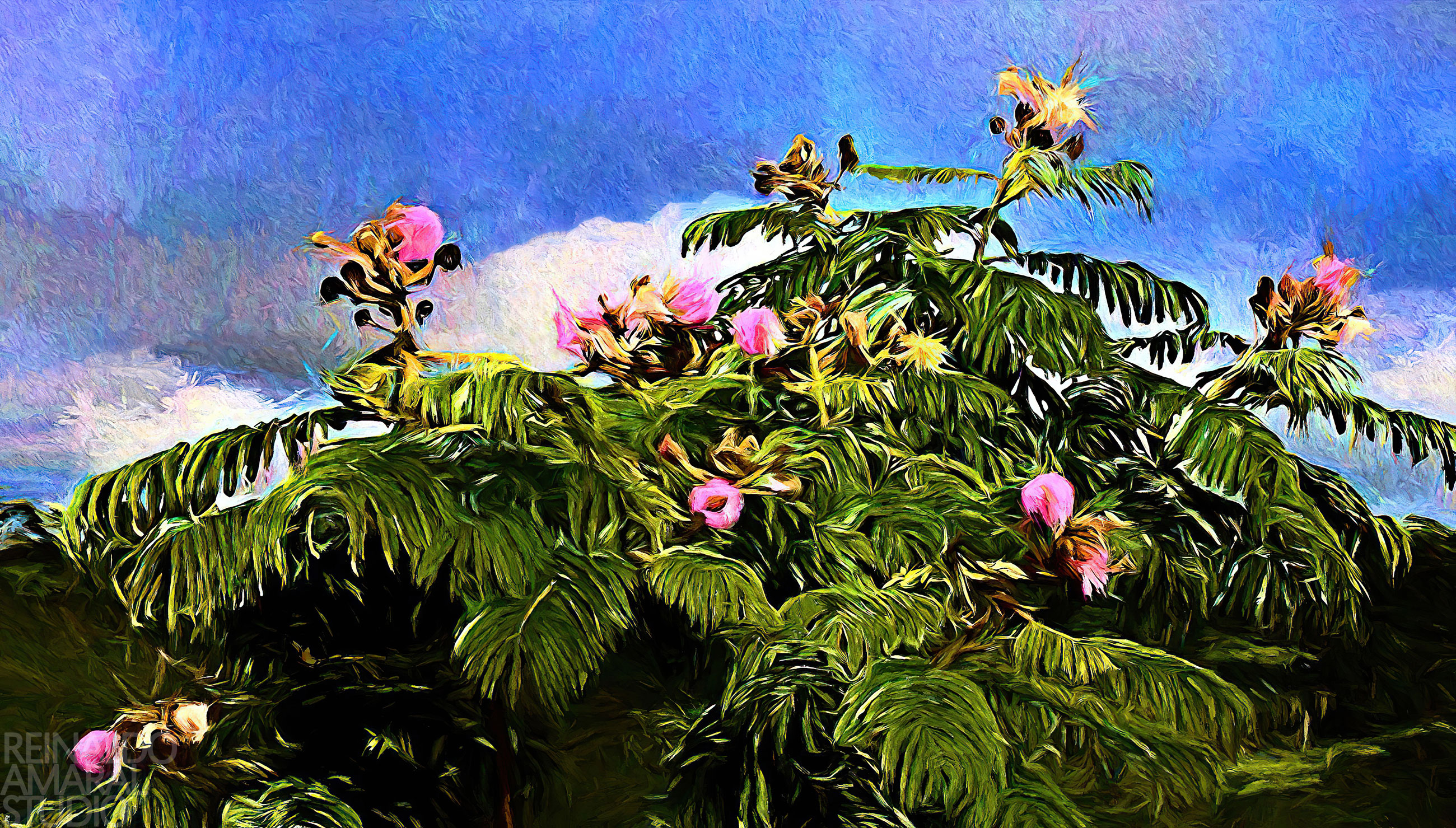CERRADO STUDY - Albizia Julibrissin
Limited Edition of 10 - Etching on Paper
Mineral Pigment Printed on 100% COTTON Fine Art paper
Certified engraving signed and dated by the artist
$ 1,560 USD
Shipping included

ALBIZIA JULIBRISSIN
Ornamentally, it is considered an urban tree, used in gardening and landscaping projects, as solitary trees, in alignment or creating small forest masses.It was introduced to Europe around the 18th century as an ornamental tree. In its habitat, in the middle of nature, it tends to grow in plains or sandy valleys, as well as in highlands.
Facing Spain, it can be seen as a tree in gardening, distributed throughout the Mediterranean arc, where the climate is hot in summer and mild in winter.
ACACIA OF CONSTANTINOPLE
Commonly known as Acacia of Constantinople or Silk Tree, its scientific name is actually Albizia julibrissin and although it is not a true Acacia, but rather a species of a closely related genus (Albizia) it belongs to the same subfamily Mimosaceae, within the Fabaceae family ( Leguminosae)
Etymologically, the name Albizia is linked to the 18th century Italian nobleman, naturalist and plant enthusiast, Filippo Degli Albizzi. It was precisely he who introduced it to Europe from Constantinople. The word julibrissin, of Persian origin, refers to a silk tree.>p> It is native to Southeast Asia (from Iran to China and even Taiwan) and was introduced to Europe in the mid-18th century, although due to its cultivation as an ornamental it is widespread throughout the world.
The Acacia of Constantinople is a beautiful deciduous tree between 8 and 12 meters high, with a wide crown whose diameter varies from 6 to 8 meters, producing a broad and varied shade. Its trunk is usually short, with grayish bark and a soft touch. This color, as the tree becomes mature, becomes greenish with vertical stripes.
It produces numerous young branches, glabrous and angular, with leaves and inflorescences with small pubescence. These branches, as they grow, become long and flexible, acquiring arched shapes, generally achieving elegant foliage.
It has bipinnate leaves between 20 and 30 centimeters long, composed of more or less 15 pairs of pinnae, each containing between 20 and 30 pairs of sessile leaflets. These leaves are green on both sides and usually pubescent on the underside. Interestingly, these leaflets close on their own in the absence of light.
Its lightly scented flowers, although they do not have petals, are very showy as they appear densely clustered as a compact group of white or pinkish stamens throughout the summer.
These inflorescences in the form of globose heads can be up to five centimeters in diameter, with around 20 to 25 flowers. It is its stamens, in the form of white, pink or reddish filaments, that give the flowers their silky appearance.
The fruit is a glabrous and compressed legume, about 10 to 15 centimeters long and one to three centimeters wide. Its appearance is that of a linear, membranous legume and is light brown or yellowish in color. This pod, when opened suddenly, expels the seeds at a distance to improve their propagation.>p> Each pod contains, on average, 8 to 12 oval or kidney-shaped seeds, brown in color and approximately 7 x 4.5 millimeters in size.
Albizia julibrissin is a very rustic tree, with practically no problems in terms of notable pests and diseases.
